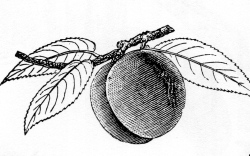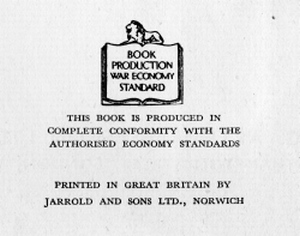Peaches & Pears: Battling a bumper crop.
If, like t he Editor, you have a peach tree and your sister grows pears, then you know that if you are lucky enough to get a good yield you will be inundated with ripe fruit in a matter of days. Unlike apples, neither peaches nor pears will keep so a little working knowledge of traditional preservation techniques and a lot of stamina become more than handy. It can be a very real battle to save your crop and the generous donation of family, but we are happy enough warriors and have managed to bake a few pies and tarts in the bargain.
he Editor, you have a peach tree and your sister grows pears, then you know that if you are lucky enough to get a good yield you will be inundated with ripe fruit in a matter of days. Unlike apples, neither peaches nor pears will keep so a little working knowledge of traditional preservation techniques and a lot of stamina become more than handy. It can be a very real battle to save your crop and the generous donation of family, but we are happy enough warriors and have managed to bake a few pies and tarts in the bargain.
 Peaches personify Georgia and also proliferate elsewhere in the American south, not to mention in the Editor’s own coastal Rhode Island. Pickled peaches and peach chutneys in particular hold a strong association with the south, and the many excellent southern cookbooks by the likes of John Egerton, Edna Lewis, Scott Peacock and John Martin Taylor include many enticing variations on these themes.
Peaches personify Georgia and also proliferate elsewhere in the American south, not to mention in the Editor’s own coastal Rhode Island. Pickled peaches and peach chutneys in particular hold a strong association with the south, and the many excellent southern cookbooks by the likes of John Egerton, Edna Lewis, Scott Peacock and John Martin Taylor include many enticing variations on these themes.
Then there is Britain. At britishfoodinamerica we have chronicled some of the British culinary traditions that underpin southern foodways, and these methods of preservation represent an enduring example. Peaches, however, do not have much association with Britain in the popular imagination, so the Editor has been delighted to find that British cookbooks brim with recipes that either preserve peaches or include the notation that the instructions may be adapted to the fuzzy fruit. One of these books is a bit of a sleeper, one of the many proprietary texts produced before the end of the twentieth century to promote a particular product or line of them. It is Home Pickling by Henry Sarson of Sarson’s Limited, the London producer since 1794 of something prototypically British, malt vinegar. The book was first published under wartime duress during 1940 and does not appear lengthy at some 136 pages. It is, however, stocked with a range of practical recipes, sound advice and lovely drawings. As we should expect, they all involve vinegar, but in neither a gratuitous nor an excessive way. One of the best is for spiced beef, a faded Christmas tradition deserving revival, and indeed that Elizabeth David claimed single-handedly to have revived during the 1960s. Here, however, is a splendid version that remained in print at least until 1949.
One of these books is a bit of a sleeper, one of the many proprietary texts produced before the end of the twentieth century to promote a particular product or line of them. It is Home Pickling by Henry Sarson of Sarson’s Limited, the London producer since 1794 of something prototypically British, malt vinegar. The book was first published under wartime duress during 1940 and does not appear lengthy at some 136 pages. It is, however, stocked with a range of practical recipes, sound advice and lovely drawings. As we should expect, they all involve vinegar, but in neither a gratuitous nor an excessive way. One of the best is for spiced beef, a faded Christmas tradition deserving revival, and indeed that Elizabeth David claimed single-handedly to have revived during the 1960s. Here, however, is a splendid version that remained in print at least until 1949.
There are chutneys and pickles of course, but also learned references to the great Hannah Glasse and her celebrated 1747 cookbook, The Art of Domestic Cookery Made Plain and Easy; ketchups not only of mushroom and tomato but also starring blackberries, cranberries, elderberries, grapes, horseradish and walnuts; instructions for preserving fish, game and meat; and welcome historical digressions.
For example, Sarson notes that old brining instructions typically assert that the liquid “should be strong enough to float an egg,” a proposition as troublesome to the Editor as it is impractical to Sarson, and something he properly derides as “rather a chancy method, for the strength will depend on the age of the egg--always a doubtful problem!” (Sarson 15) His enthusiasm for brining itself, properly executed (“half a pound of salt to three pints of water”) is positively twenty-first century. (Sarson 15)
Sarson also notes that “[t]he change in our dietary habits became most noticeable in the early eighteen-hundreds,” and assertion reinforced by Gilly Lehmann’s superb British Housewife, over six decades later, in 2003. As an example, Sarson cites the written usage of the term ‘ham:’
“In the last part of the [eighteenth] century every cookbook contained instructions for pickling beef, veal and mutton in various ways. But in 1824 Mrs. Rundle [sic] in Domestic Cookery had dropped references to beef and veal hams and ham was beginning to mean one thing only, the pickled back leg of a fat pig.” (Sarson 122)
Home Pickling cites traditional recipes for the lost hams of beef, veal and mutton with wry commentary on the pleasures and pitfalls of each. Thus, while a ham of beef might weigh in at 15 pounds during 1780, by 1940 “a beef ham from even a small beast and allowing for possible trimming would weigh at least fifty to sixty pounds. Nobody would have a pan large enough to pickle it. The only place would be the bath and to have the bathroom out of commission in this hygienic age would be a tragedy and cause a violent revolution....” (Sarson 121)
Pickling peaches is more practical. “Pickled peaches,” according to John Egerton in Southern Food: at home, on the road, in history (Chapel Hill 1993), “have been a dinner-table treat in many parts of the South since colonial times,” and calls his recipe “typical of most.” (Egerton 188) It also is indistinguishable in practical effect from Sarson’s.

